Let’s be honest—saving money feels impossible when your rent eats half your paycheck and student loans devour the other half. But here’s the thing: even on a tight budget, small changes can lead to surprisingly big wins.
I used to think saving was just for people who had “extra” money lying around. Spoiler alert: nobody has extra money lying around. We all have to create it, one dollar at a time.
Why Saving Money Matters More Than Ever in 2025
Picture this: you’re 30, and your car decides to have a mid-life crisis on the same day your laptop gives up the ghost. Without savings, you’re looking at credit card debt or borrowing from friends (awkward much?). But with even a modest emergency fund, you handle it like the adult you pretend to be on LinkedIn.
The current economic landscape makes saving even more critical. High-yield savings accounts offer rates of up to 5% APY, which means your money can grow while sitting safely in the bank. That’s a game-changer compared to the near-zero rates we saw just a few years ago.
What Percentage of My Income Should I Save Each Month?
The golden rule? Start with 20% if you can, but 1% is infinitely better than 0%.
Here’s the breakdown that works for real people:
- Emergency fund: 5-10% of income
- Retirement: 10-15% (including employer match)
- Short-term goals: 5-10%
Can’t swing 20%? No problem. Start with whatever you can—even $25 a month builds the saving habit. The key is consistency, not perfection.
Regular vs. High-Yield Savings: The $500 Annual Difference
Traditional savings accounts pay about 0.01% APY. That’s paying you in pocket lint. High-yield savings accounts, on the other hand, currently offer rates around 4.3% to 5% APY.
Let’s do some quick math:
- $10,000 in traditional savings: $1 annual interest
- $10,000 in high-yield savings: $430-$500 annual interest
That’s a free vacation just for moving your money. Seriously, it takes 10 minutes online.
Top High-Yield Options for 2025
Bank | APY | Minimum Deposit | Monthly Fee |
Online Bank A | 4.5% | $0 | $0 |
Credit Union B | 4.3% | $500 | $0 |
Neo Bank C | 5.0% | $1 | $0 |
Note: Rates as of June 2025 and subject to change
Building Your Emergency Fund: The Ultimate Financial Safety Net
An emergency fund isn’t just nice to have—it’s your financial superhero cape. Life has a funny way of throwing curveballs when you’re least prepared.
How much should you save? Start with $1,000, then work toward 3-6 months of expenses. If that sounds overwhelming, remember: even $500 covers most car repairs or urgent flights home.
Emergency Fund Strategies That Work
The “benefits of saving money” go beyond just having cash on hand. Here’s how to build yours painlessly:
- Automate everything: Set up automatic transfers right after payday
- Save windfalls: Tax refunds, bonuses, birthday money—straight to savings
- Round-up purchases: Use apps that round up to the nearest dollar
- Start tiny: $20 a week equals $1,040 a year
Compound Interest: Your Money’s Best Friend
Einstein allegedly called compound interest the eighth wonder of the world. Whether he said it or not, the guy was onto something.
Here’s how it works: You earn interest on your money, then you earn interest on that interest. It’s like financial inception.
Example: Save $200 monthly at 4% annual return:
- After 5 years: $13,272
- After 10 years: $29,454
- After 20 years: $73,287
The magic isn’t in the rate—it’s in the time. Starting at 25 instead of 35 can literally double your money by retirement.
Money Market vs. Savings: Which Team Are You On?
Think of money market accounts vs savings accounts like choosing between a sedan and an SUV. Both get you where you’re going, but they serve different purposes.
Money Market Accounts:
- Higher interest rates (usually)
- Check-writing privileges
- Higher minimum balances
- Limited transactions
Savings Accounts:
- Lower minimums
- Pure savings focus
- Online options with great rates
- Simple and straightforward
For most millennials, a high-yield savings account wins. It’s simpler, has lower minimums, and offers competitive rates without the complexity.
Debt vs. Savings: The Ultimate Showdown
Should you pay off debt or save money first? It’s like asking whether pineapple belongs on pizza—everyone has strong opinions.
The practical approach:
- Save $1,000 for emergencies first
- Pay minimums on all debts
- Attack high-interest debt (credit cards over 6% interest)
- Build an emergency fund for 3-6 months
- The balance debt payoff with additional savings
Exception: If your employer matches 401(k) contributions, contribute enough to get the full match. That’s free money you can’t get back.
Fees: The Silent Savings Killers
Bank fees are like mosquitoes at a barbecue—small, annoying, and they add up fast. Watch out for:
- Monthly maintenance fees: $5-15/month = $60-180/year
- ATM fees: $3-5 per transaction
- Overdraft fees: $35 per occurrence (ouch)
- Minimum balance fees: Usually avoidable with direct deposit
Pro tip: Credit unions often have lower fees and better rates than big banks. They’re like the neighborhood coffee shop of banking—friendlier and cheaper.
Automation: Set It and Forget It Savings
The best savings plan is the one you don’t have to think about. Set up automatic transfers for:
- Emergency fund: $50-100 after each paycheck
- Goals: Vacation, car, house down payment
- Retirement: Max out that employer match
Make it feel like a bill you have to pay. Because honestly, paying your future self is the most important bill of all.
Tax-Smart Saving: Traditional vs. Roth
Here’s where it gets spicy. Traditional retirement accounts give you tax breaks now but tax you later. Roth accounts use after-tax dollars but grow tax-free forever.
For millennials in lower tax brackets: Roth usually wins. You’ll likely earn more (and pay higher taxes) in the future, so getting the tax hit out of the way now makes sense.
Simple rule: If you’re in the 12% tax bracket or lower, go Roth. Higher than that? Traditional might be better.
Budget Adjustments: When Life Happens
Budgets aren’t set in stone—they’re more like guidelines that help you make better decisions. When unexpected expenses pop up:
- Review and adjust: Look at your monthly expenses ruthlessly
- Prioritize: Needs before wants, always
- Find temporary cuts: Skip the daily latte for a month
- Avoid debt: Adjust spending instead of borrowing
The goal isn’t perfection—it’s progress. Every small adjustment builds better financial habits.
FDIC Insurance: Why $250,000 Matters
Your money is FDIC insured up to $250,000 per depositor, per bank. This means even if your bank goes belly-up, your money is protected by the federal government.
For amounts over $250,000, spread your money across multiple banks. It’s a good problem to have, but worth planning for.
Joint Savings: Making It Work With Your Partner
Money conversations can be tougher than assembling IKEA furniture, but they’re crucial. Here’s how to make joint savings goals work:
- Set shared goals: House, vacation, kids’ education
- Respect different styles: Spender vs. saver can balance each other
- Regular check-ins: Monthly money dates (yes, that’s a thing)
- Separate fun money: Everyone needs some guilt-free spending
Credit Unions: The Hidden Savings Gem
Credit unions are like banks’ cooler, more generous cousins. They often offer:
- Higher savings rates
- Lower fees
- Better customer service
- More flexible lending
The catch? You need to qualify for membership, usually through your job, location, or family connections. But it’s worth checking—many have broad membership requirements.
APY Shopping: How to Compare Like a Pro
Don’t just look at the big number—dig deeper:
- Annual Percentage Yield (APY): This accounts for compounding
- Minimum balance requirements
- Monthly fees that could wipe out interest
- Promotional rates: Are they temporary?
- Account access: Online-only vs. branch access
Use comparison sites, but always verify rates directly with the bank. Rates change frequently in today’s market.
Goal-Tracking Tools and Apps
Your smartphone can be your savings coach. Top apps for tracking progress:
- Mint: Free budgeting and goal-tracking
- YNAB: Zero-based budgeting approach
- Qapital: Round-up savings automation
- Ally Bank app: Great for multiple savings goals
- Personal Capital: Investment and savings tracking
Find one that doesn’t feel like homework. The best tool is the one you’ll actually use.
Common Saving Mistakes to Avoid
Learn from other’s mistakes:
- Waiting for the “perfect” time: Start now with what you have
- All-or-nothing thinking: $25/month beats $0/month
- Ignoring employer matches: That’s free money!
- Keeping all savings in checking: You’re losing money to inflation
- No emergency fund: This leads to debt cycles
- Analysis paralysis: Don’t spend months researching—pick a good account and start
Your Savings Action Plan
Ready to turn knowledge into action? Here’s your starter pack:
Week 1:
- Calculate your monthly expenses
- Set up automatic transfers to savings
- Research high-yield savings accounts
Week 2:
- Open a high-yield savings account
- Set up emergency fund automation
- Review subscription services for cuts
Week 3:
- Increase 401(k) contribution if possible
- Set specific savings goals with timelines
- Try a budgeting app
Month 2 and beyond:
- Review and adjust monthly
- Celebrate small wins
- Gradually increase the savings rate
Remember, personal finance is exactly that—personal. What works for your friend might not work for you, and that’s okay. The key is finding a system that fits your life and sticking with it.
The Bottom Line
Saving money isn’t about depriving yourself—it’s about giving yourself options. Options to handle emergencies without stress. Options to take opportunities when they arise. Options to sleep better at night knowing you’re building a secure future.
Start where you are, with what you have. Your future self will thank you for every dollar you save today, even if it’s just one.
Ready to take control of your financial future? Start by opening a high-yield savings account this week. Set up one automatic transfer. Track one goal. Small steps lead to big changes, and your journey to financial security starts with that first saved dollar.
What saving strategy will you try first? Share your goals in the comments below—we’re all in this together!
For more comprehensive financial guidance and money-saving strategies, visit Wealthopedia for expert insights on building wealth and securing your financial future.

























